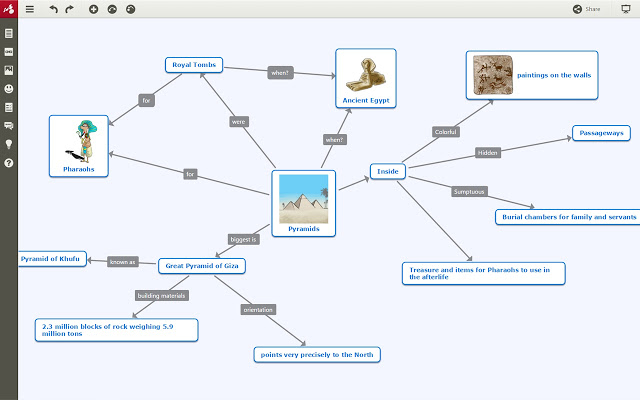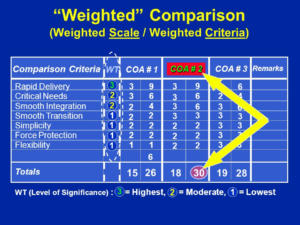We’ve discussed in the past on these pages the importance of clear, concise and well, considered objectives in order to have a goal for strategies to achieve. We’ve discussed the myriad pitfalls leaders struggle with from inability to define their vision and objectives, to the lack of discipline required to see the planning process through to the emotions that get in the way when the person they love needs to be let go and replaced with someone who can do the job better than their family member or close friend.
Those are the issues that leaders need to confront first and foremost when they decide to go down the truly necessary road of strategic planning for organizational success. When you decide you’re up to it, disciplined to see it through and have set your objectives in writing, you’ll need to go through the front work we’ve discussed here in the past to list, challenge and validate your assumptions. Once that is done, you’ll be ready to actually begin developing strategy.
At that point you want to think through multiple possible ways to achieve the objectives you’ve set. Remember, strategy is the ways that connects your available means to the ends you wish to achieve. It might seems simple to you. In fact, you will very likely have a way pop into your head at the very beginning. That’s good. Write it down. Then have your strategy team come up with multiple different ways to achieve your ends.
For example, if you live in Los Angeles and your objective is to spend a week seeing Broadway Plays, you might immediately think about buying plane tickets to New York City to do that. But you might want to first determine how many plays you want to see in what time frame. Then you’ll want to see if those plays have ticket availability during the time frame you have for your trip. So linking your desired objective to your means involves knowing how much money you have and whether what you want to do is even feasible when you want to do it. Your strategy will necessarily involve travel, whether by plane, car, hot air balloon, or hitchhiking with truckers. You will need a place to stay, whether in a hotel, AirBnB, hostel or couch surfing.
The variables you must consider in your strategy equation are numerous. And this is for vacation planning. It gets much more difficult when you strategize for business objectives you want to achieve over 5 years. So how do you do it?
I recommend building out multiple courses of action in which you select common scoring criteria and then actually give scores to your criteria for each possible course of action. I say for each possible course of action because it is critical you have at least three from which to choose. If you have one course of action, you’ll never actually have anything to compare it to. If you develop two, almost certainly one will be a straw-man which is designed to make your preferred option look even better. The disciplined leader’s strategy team develops at least three courses of action which can all succeed on their own merit and picks whichever of the three scores the best regardless of attachment to them.
I’ll offer three paths to developing courses of action, each one successively more detailed, and, I think, better for your ultimate strategy. The first is to develop a simple matrix where your criteria are scored as good, bad or neutral. Such a matrix would look like this:
As you can see, the criteria are scored by the team and after simple math, the course of action with the best score is the one the organization will follow to achieve their objectives. What you need to consider is that this method assumes all criteria are equal and that good or bad are sufficient without needing more detailed considerations of better or how much better.
To that end I’d suggest the following matrix is an option that will offer you greater fidelity:
This matrix recognizes that performance of each criteria can be considered on a scale. That gives the strategy team a greater fidelity in selecting the best option. But it still considers each criteria as equal. So what would the best matrix option be for strategy development? One that allows a performance scale while weighting each criteria on importance. It would look something like this:
Now that your strategy team has selected your course of action you need to go through the next difficult step of delineating every foreseeable task that will have to be performed. You will need to put those tasks on a calendar and assign them to a specific person. That person will need to know that standard to which that task is expected to be completed. And you will have to assign someone to actually check or audit the progression of those tasks during your process.
Your Course Of Action = ∫Taska x Taskb x Taskc…
Like your assumptions drill that you performed before you started course of action development, task development and delineation is a difficult and time-consuming drill. There is no magic pixie dust to make it simple. But it will almost certainly guarantee your success if followed.
Some tasks can run concurrently and others will need to done sequentially. You have to take into account the time each task requires or else your project is untenable. How long does it take to hire contractors to do specific work? If you plan to use wood from a specific tree, how long will it take to mill the wood. How long will it take to kiln dry? Is the kiln available on your time frame? Who will handle your copier/printer contract. How much will toner cartridges cost you? Who will you assign to maintain your network? These are the task details that easily derail projects that have really good objectives.
Finally, if you care about your legacy and the long-term success of the project, you will hire a quality assurance team to monitor and report on the task completion to well-established industry standards. The next time you need a mental break from your work, check out building disasters due to poor materials. You’ll be amazed at how many projects were well planned yet failed with some loss of life due to accepting poor task performance.
Strategy is not easy, but it is necessary. If you have wheelbarrows full of cash and don’t really need to get it right the first time, then forget everything you’ve read above. If you have one shot to get it right and that success will set you up for future projects and objectives, then put together the most diverse team of thinkers you can. Hire a strategist to walk you through the process (not necessarily a large consulting firm that’ll give you a binder and checklists). Look in the mirror and ask yourself as a leader, can you be disciplined to do what you need to do. I think you can.
Write me if you need any help. That’s what we’re here for.
Keep thinking…









Leave A Comment